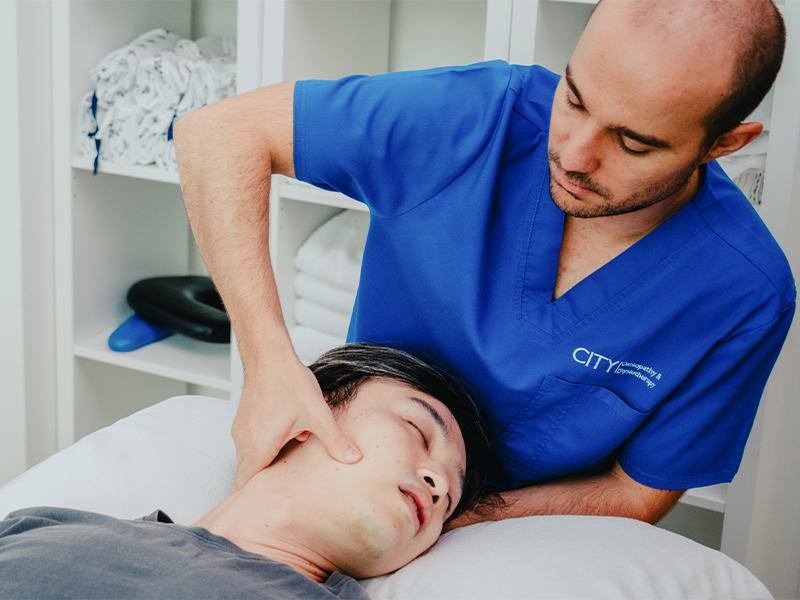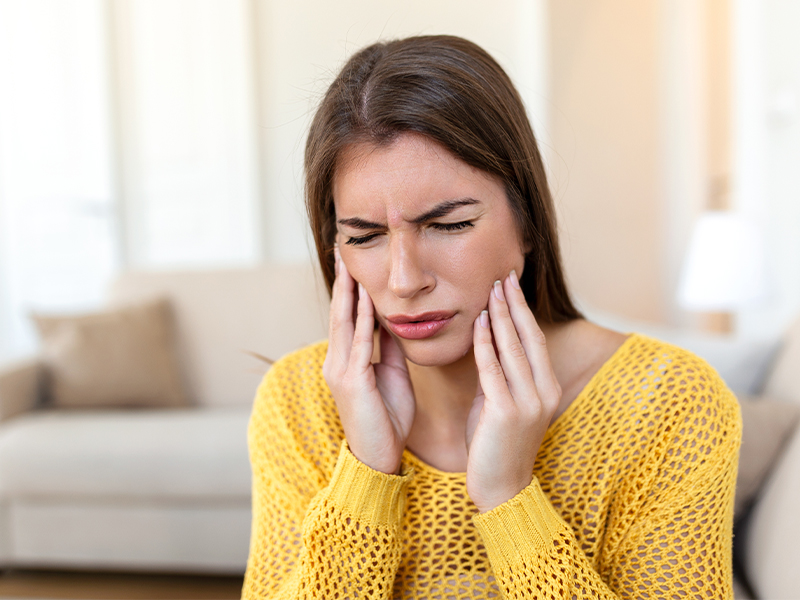Do you experience jaw pain, feel a clicking or popping sensation and find it hard to open or close your mouth? You might be suffering from Temporomandibular Joint (TMJ) Disorder. Parisian born and British trained osteopath ARTHUR CODSI specialises in structural osteopathy treatment focusing on sports injuries and biomechanical issues including TMJ Disorder, disc herniation and neuropathy. When not pitch-side at a rugby match, you’ll find him at City Osteopathy & Physiotherapy helping patients seeking a holistic, all-natural approach to relieve pain through manual hands-on therapy.

Tell us about yourself.
Growing up, I had a deep interest in both sport and medicine. My love for sport led me to competitive judo, snowboarding and trail running, but also exposed me to injuries and pain. Witnessing the transformative power of skilled physical healthcare professionals intrigued me, sparking a desire to help others using my hands.
The comprehensive training and philosophy of osteopathy resonated with me. It also doesn’t require any machines or external diagnostic tools, which makes the whole process a lot more natural.
What exactly is osteopathy?
It’s a distinctive form of manual medicine that focuses on restoring the body’s natural balance and functions. The body is viewed as an integrated whole, where the musculoskeletal system, nervous system and other body systems work in harmony. By identifying and addressing the root cause of a problem, osteopaths aim to promote self-healing and improve overall wellbeing.
While traditional medicine primarily relies on drugs and surgery, osteopathy treatment takes a more hands-on, patient-centred approach. We use various techniques such as soft tissue manipulation, joint mobilisation and stretching exercises to enhance circulation, reduce tension and improve range of motion.
What kind of conditions can osteopathy treatment help?
Osteopathy offers a broad spectrum of benefits, making it effective in treating various conditions including back and neck pain, headaches, joint pain, sports injuries and postural problems. It can also provide relief for chronic conditions like arthritis, asthma and headaches.

What is TMJ Disorder and what causes it?
It’s a condition affecting the jaw joint and surrounding muscles and can result from various factors including jaw injuries, teeth grinding, arthritis, stress-induced jaw clenching and poor posture. Patients experience symptoms such as jaw pain, clicking/popping sounds when opening the mouth, and headaches.
What methods do you use to alleviate TMJ Disorder?
Having suffered from TMJ myself, I know that healing extends beyond physical touch. I use a combination of techniques tailored to each patient’s specific needs. Gentle manipulation of the jaw joint and surrounding muscles helps to reduce tension and improve joint mobility. I also incorporate exercises to strengthen and stabilise the jaw, complementing the hands-on approach. The session is generally pain-free and offers relief very quickly.
Can you share a real-life story of TMJ recovery?
Julia is a 30-year-old working professional who sought my help after experiencing excruciating jaw pain and difficulty eating. She said job-related stress seemed to be exacerbating her condition.
I used a combination of hands-on techniques and myofascial release to address the root causes of her TMJ disorder. We also discussed stress management techniques, incorporating breathing exercises and mindfulness practices into her daily routine.
After a few sessions, Julia began to notice a significant reduction in her jaw pain. There was also an improvement in her ability to eat comfortably. As we continued the osteopathy sessions, she regained her jaw’s full range of motion and found relief from her stress-induced clenching habits. Julia’s story serves as a testament to the transformative power of osteopathy and the importance of personalised care in the healing process.
City Osteopathy & Physiotherapy has clinics at Novena, the CBD, Bukit Timah, Woodleigh and the East Coast.
This article first appeared in the September 2023 edition of Expat Living. You can purchase the latest issue or subscribe, so you never miss a copy!
To make the most of living in Singapore, read our latest City Guide here for free!
Don't miss out on the latest events, news and
competitions by signing up to our newsletter!
By signing up, you'll receive our weekly newsletter and offers which you can update or unsubscribe to anytime.


